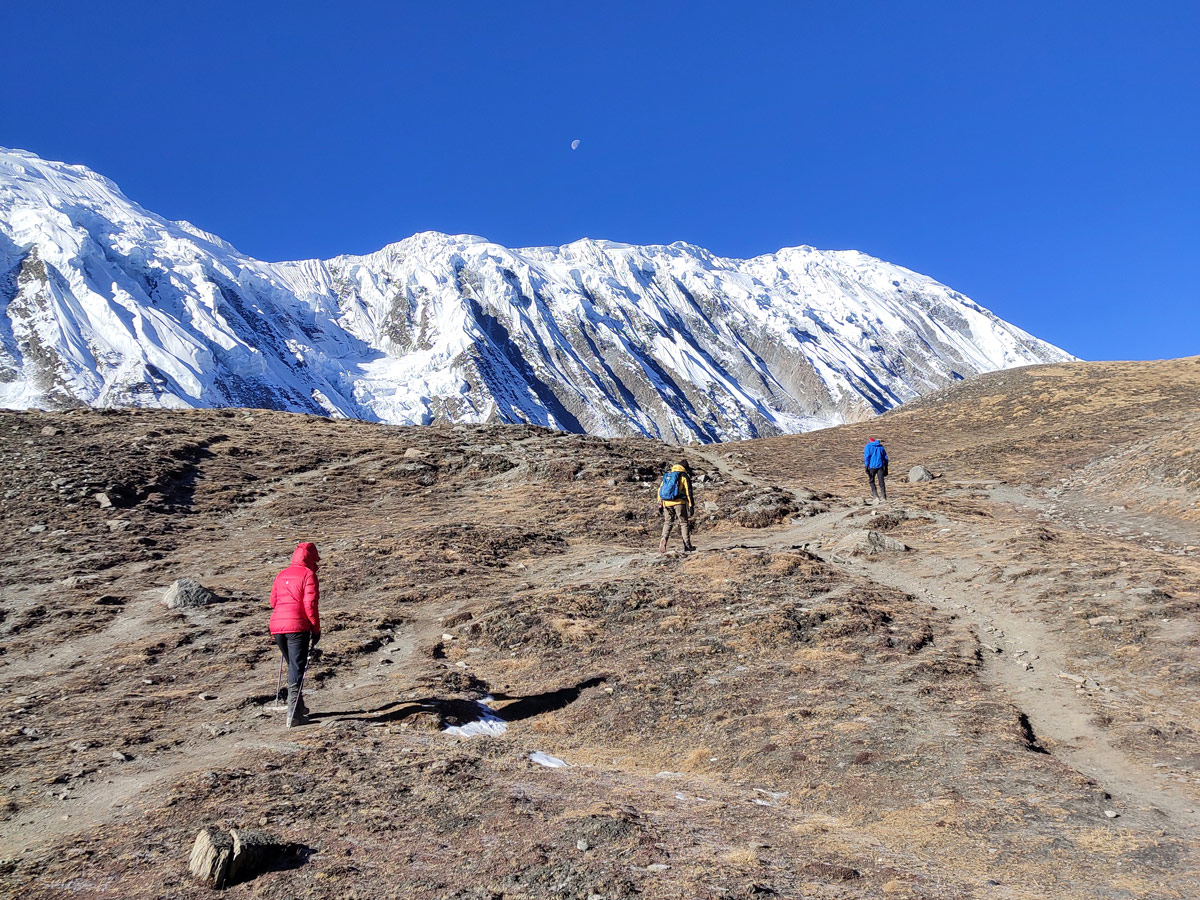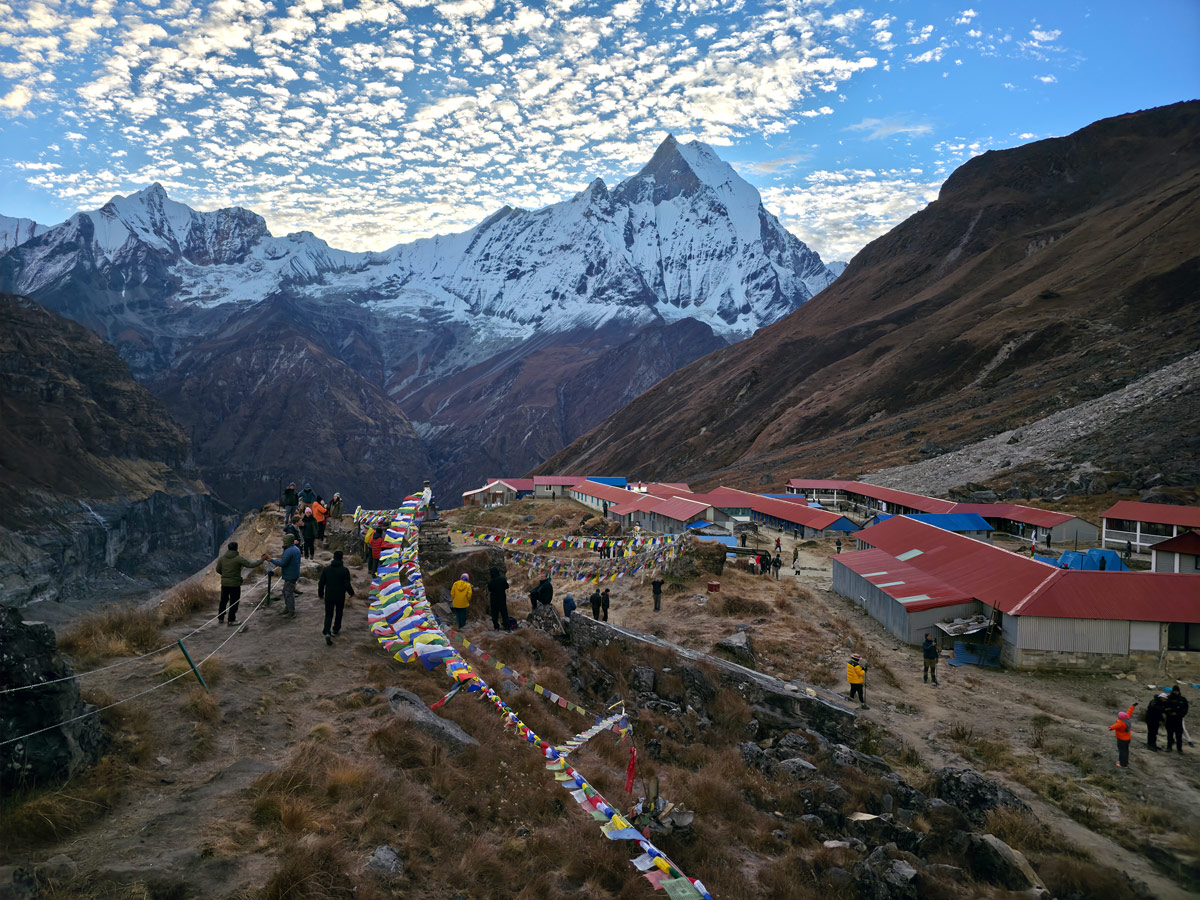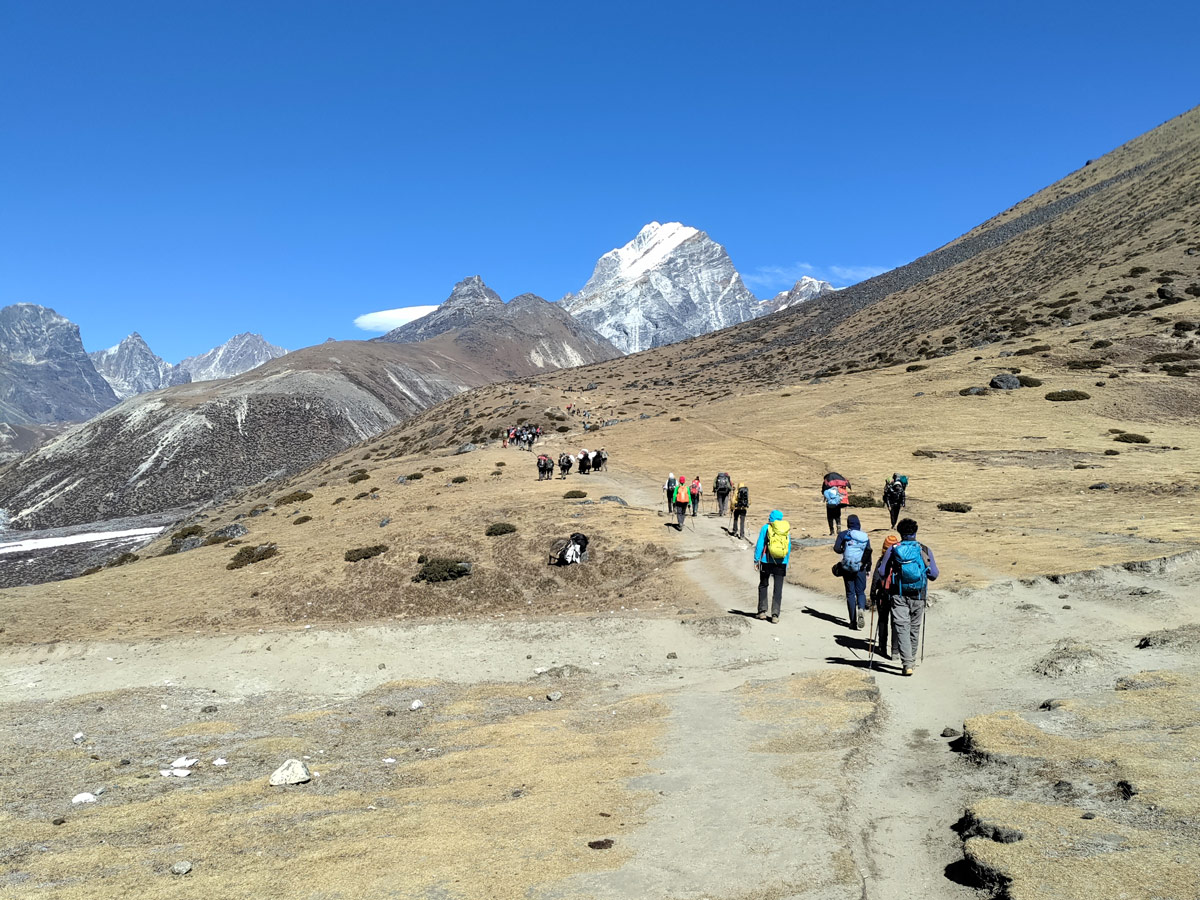The very name of Nepal evokes images and thoughts of snow-clad Himalayas, vibrant cultures, ethereal landscapes, and high-altitude trekking trails for most of the people as the country is known for being a trekker’s paradise.
Nepal is home to eight of the fourteen 8000-ers, and trekking in Nepal is a bucket list adventure for most of the people, especially trekking enthusiasts. This adventure indeed promises breathtaking vistas and an experience worth remembering.
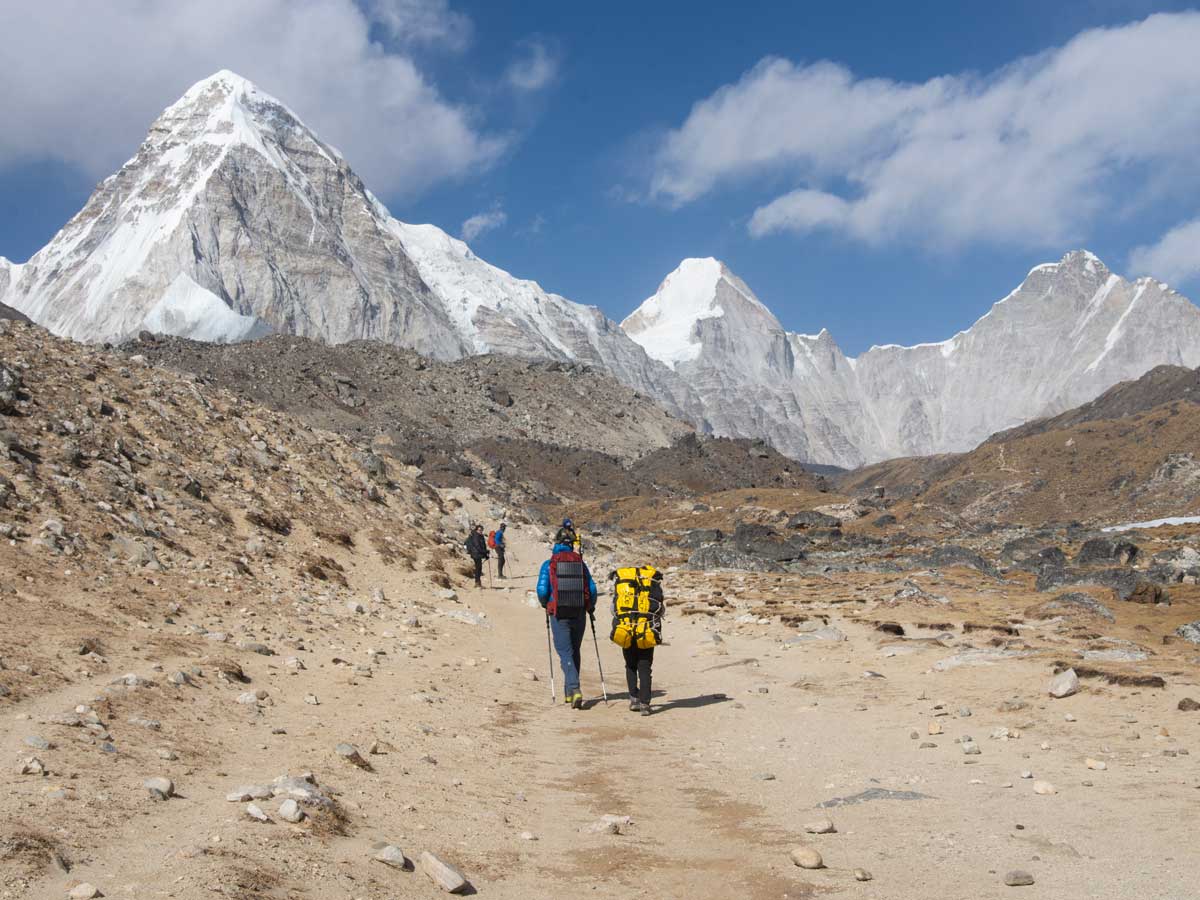
However, one major aspect of trekking in Nepal that often gets overshadowed by the jitters and thrill of trekking around the mighty Himalayas is altitude sickness, and it manages to catch trekkers off guard.
This challenge known as altitude sickness can quickly turn your dream adventure into a dreaded nightmare if you are not prepared to tackle it. To tackle it, you need to be aware of altitude sickness as you gain elevation on the trek.
While you do need to fear it, your focus should be on empowering yourself against it. Therefore, in this blog, we are covering everything you need to know about altitude sickness prevention tips for trekking in Nepal.
Understanding High Altitude Sickness
First of all, let’s begin by understanding what high-altitude sickness really is. For starters, as the name suggests, it is a condition triggered by increased elevation- especially beyond 2,500 meters (8,202 feet).
As the altitude increases, the air becomes thinner which reduces the availability of oxygen. Along with this, the atmospheric pressure and barometric pressure decreases significantly as well.
Basically, at sea level, atmospheric oxygen is about 21% and arterial oxygen saturation (SpO₂) is usually 95-99%. At 3,000 meters (9,843 ft), oxygen saturation can drop to 90% or lower and at 5,000 meters (16,404 ft), it can fall below 70%.
The cause of altitude sickness shouldn’t be mistaken as reduction of atmospheric oxygen, as it remains approximately 21%. However, it is caused due to hypobaric hypoxia, which is low oxygen due to reduced barometric pressure at high elevations.
This basically means that each time you breathe, you will be taking in less and less molecules of oxygen that leads to less oxygen supply to your lungs and other vital organs which causes your body to react.
Additionally, one of the main reasons why altitude sickness strikes is because you are constantly exposed to cold air around your body, and especially in possibly uncovered areas like your head.
While you might be feeling hot due to the physical activity, the surrounding air is also extremely cold. Combine that with the harsh wind and shift of terrain from alpine to rugged ones, and it further increases the chances of getting altitude sickness.
Most of the treks in Nepal take you to altitudes well beyond 2,500 meters (8,202 ft), often even crossing the 5,000 meter (16,404 ft) mark. Therefore, altitude sickness can be a serious concern while trekking in Nepal if not managed properly.
The Types of Altitude Sickness
Altitude sickness can manifest in different forms based on the altitude, your physical condition, presence of any underlying disease, and mainly your body’s ability to adapt to the changes. Mainly, altitude sickness is of three types:
Acute Mountain Sickness (AMS)
Acute mountain sickness is the first sign that your body is not adjusting well to the altitude. It is the most common form of altitude sickness, so much so that it is also regarded as the common traveler’s companion!
This is the mildest form of altitude sickness which means there is nothing to be gravely worried about. However, this is exactly when you should start listening to your body and stop ascending further.
The symptoms of AMS are eerily similar to a flu or a hangover and includes non-specific symptoms that typically appear within 6 to12 hours of ascending to higher altitudes, often worsening overnight.
Symptoms include:
- Headache
- Nausea and vomiting
- Fatigue or weakness
- Dizziness or light-headedness
- Loss of appetite
- Difficulty sleeping
- General malaise
High Altitude Pulmonary Edema (HAPE)
Now, this is where things start getting serious. High altitude pulmonary edema (HAPE) is a severe and life-threatening form of altitude sickness and is a dangerous condition where fluid starts accommodating in the lungs.
The presence of this fluid interferes with the process of effective oxygen exchange, meaning it reduces the ability of lungs to transfer oxygen to blood and other organs.
This leads to critical oxygen deficiency in the body and leads to an emergency requiring immediate medical attention. This occurs at altitudes over 3,000 to 4,000 meters (9,842-13,123 ft) and can develop rapidly.
The only solution is immediate descent and medical attention. Symptoms of HAPE include:
- Shortness of breath at rest
- Persistent cough, sometimes with white or pink (more severe) frothy sputum
- Chest tightness or congestion
- Extreme fatigue and weakness
- Cyanosis (bluish discoloration of lips and fingertips)
- Rapid heart rate
- Gurgling or rattling sounds in chest
High Altitude Cerebral Edema (HACE)
Similar to HAPE, High Altitude Cerebral Edema (HACE) is also a life threatening condition and a severe form of altitude sickness. It is often a progression of AMS or HAPE.
In HACE, fluid accommodates within the brain which is coupled with swelling of brain which impairs the brain functions. It is a dire medical emergency and can lead to coma or instant death if immediate action is not taken.
Symptoms of HACE include:
- Severe and persistent headache
- Loss of coordination and balance (Ataxia)
- Confusion or disorientation
- Altered mental state
- Hallucinations
- Severe weakness
- Inability to walk
- Blurred or double vision
- Seizure or coma in extreme cases
Who Is Most at Risk of Altitude Sickness?
The thing that makes altitude sickness even more challenging is that it can strike anyone, regardless of their age or fitness level. No matter how prepared you are, you can never truly be sure that you won’t get altitude sickness.
However, there are certain people who are at more risk of getting affected by high altitude sickness. Identifying this vulnerability can help in better planning and precautions.
First group is the first-time trekkers. If you have never trekked in high altitude before, you don’t know how your body responds to thinner air. This lack of prior exposure can make you more vulnerable.
Also, people with certain preexisting medical conditions can be more susceptible to altitude sickness. This is especially true for people with respiratory diseases, cardiovascular issues, and anemia.
If you have past history of altitude sickness, chances are you might get it again. For rapid ascenders who climb too quickly and don’t allow their body to adapt, you are extremely vulnerable to altitude sickness too.
Beyond this, young children and old adults might be more prone to altitude sickness. Also, you should avoid exerting yourself too much and never ignore early symptoms of altitude sickness.
How to Prevent Altitude Sickness?
Now that we have established that altitude sickness can hit anyone, it is important to know what you can do to be safe. Prevention is your best defense against altitude sickness.
By adhering to the things given below, you can adopt a proactive approach to make your trip convenient and safe as much as possible:
Ascend Gradually
The main risk factor for altitude sickness is rapid ascent. When you go too fast on the trails, you might not realize it, but your body really struggles to adapt to the geographical changes.
Even if it might feel like you can easily cover 10 to 12 kms with an altitude difference of almost 800 to 1000 meters in a day, this can be a really bad idea as you are not giving your body time to adapt.

Therefore, you need to resist the urge to rush your ascent and stick to the well planned itinerary for your trek. Follow the golden rule, i.e. ‘climb high, sleep low’. Once you are above 3,000 meters (9,842 ft), don’t gain more than 500 m sleeping altitude everyday.
Include Acclimatization Days
The single most important tip to prevent altitude sickness while trekking in Nepal is to acclimatize well. Do not ignore acclimatization at any cost as this gives your body the much required time to adapt.
Acclimatization can be easily achieved by including rest days in your itinerary in locations where the elevation starts getting beyond 3,000 meters (9,842 ft). Best example for this is acclimatization in Namche Bazaar during the iconic Everest Base Camp Trek.
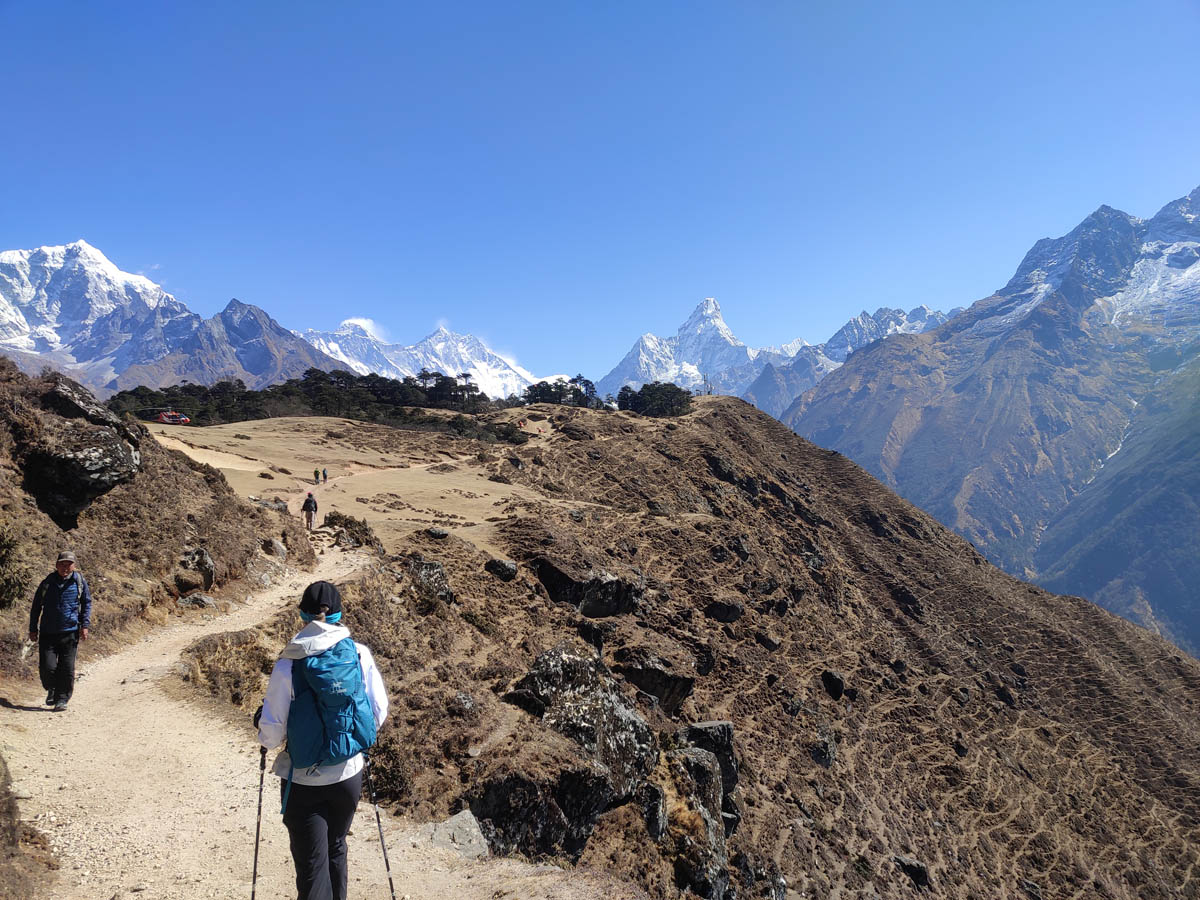
The standard rule is that for every 1,000 meters (approx. 3,300 feet) climbed above 3,000 meters (9,842 ft), or every 2-3 days of ascent, you should plan a rest day. You can make slight modifications to this.
Acclimatization also prevents your body from over exertion. On acclimatization days, you not only rest but you also go for acclimatization hikes to nearby places at high altitude and come back to the resting stop at lower elevation.
Stay Hydrated
Hydration is your body’s best friend at high altitude as it can keep altitude sickness at bay. You will dehydrate quickly in these areas as there is increased breathing and increased urination.

Therefore, you should carry reusable water bottle and drink at least 3 to 5 liters of fluid per day. This can be in the form of water, fruit juice, soups, herbal teas, or even any other hydration fluids.
You need to make sure your urine is clear or light yellow. Avoid drinking alcohol or any other caffeinated drinks as it can quickly dehydrate you.
Eat Well and Enough to Recover
Food is another partner during your trek which you should choose wisely. Make sure to eat nutritious food that can keep you healthy and energetic during the trek.
Avoid junk food and heavy fatty meals as it can be difficult to digest. Take more of complex carbohydrates like rice, pasta, bread, potatoes, and lentils as it can give you sustained energy.

Carry high-energy snacks like nuts, dried fruits, energy bars, and chocolates to keep your energy levels stable between meals. Avoid eating meat as you might get food poisoning as the meat in high altitude may be old.
Listen to Your Body
While you might not actively feel sick, your body might still be showing you signs of discomfort and beginning of acute mountain sickness. Therefore, you should always listen to your body during high altitude treks.
If you notice even the slightest of discomfort or any signs of AMS, stop ascending further. If the symptoms worsen and you start feeling sick, descend immediately to a lower elevation.
You can always continue your trek once you feel better. If you don’t feel better, there is no harm in returning midway, there is always a next time as long as you are safe.
Take Medicines if Needed
If you feel at unease or feel your symptoms beginning, it is always best to take medicines. However, make sure you are taking the right kind of medicines meant for altitude sickness and not any random medicine.
Some common medications to deal with altitude sickness include ibuprofen or paracetamol which can be taken for headaches but should not be used to mask symptoms and continue climbing.
You can also take Acetazolamide (Diamox) which helps your body acclimatize faster. Consult your doctor for the proper dosage.
Training and Pre -Trek Preparation
The main thing that you should focus on before the trek is to train and prepare properly as any amount of preparation is not adequate to tackle the challenges of high altitude treks.
You should engage in cardio to strengthen your heart and lungs and to build endurance. You should also do strength training to make your body stronger to ascend for longer hours.
Make sure to go for a hike with additional weight or simply climb stairs of a tall building with weight as it helps to stimulate trek like conditions which can be helpful to manage your breathing during the trek.
What to Do If You Get Altitude Sickness?
Even after all the prevention, if you still get altitude sickness, the first step is to not panic as panicking can make things even worse. You need to know how to manage altitude sickness.
If you have mild symptoms, it can be easily managed by resting, keeping yourself hydrated, and avoiding any further ascent. Also, make sure to eat nutritious food.
If your symptoms are worsening, don’t wait for them to improve as it can make the situation even more grave. Rather, descend at least 500 meters immediately.
Now, if the symptoms are bad and you see signs of HAPE or HACE, you need to descend immediately and get medical help. You also might need to use extra oxygen if available.
Your guide will have first aid training and will get all the help possible. However, you need to immediately inform the guide as soon as you start feeling any kind of discomfort.
Myths and Misconceptions About Altitude Sickness
While the reality of altitude sickness is already quite scary, some myths tend to worsen it and induce unnecessary fear into the minds of the trekkers while others downplay the reality. So, let’s debunk some myths related to altitude sickness:
- “Only unfit people get altitude sickness”- False, fitness doesn’t prevent it.
- “Diamox cures altitude sickness”- False. It helps prevent but not treat severe symptoms.
- “Drinking water is enough”- Hydration helps, but other strategies are essential.
- “You can ‘tough out’ altitude sickness”- Nope, ignoring symptoms can in fact worsen it.
- “Drinking alcohol helps you sleep better at high altitude”- It won’t. In fact, it worsens altitude sickness.
